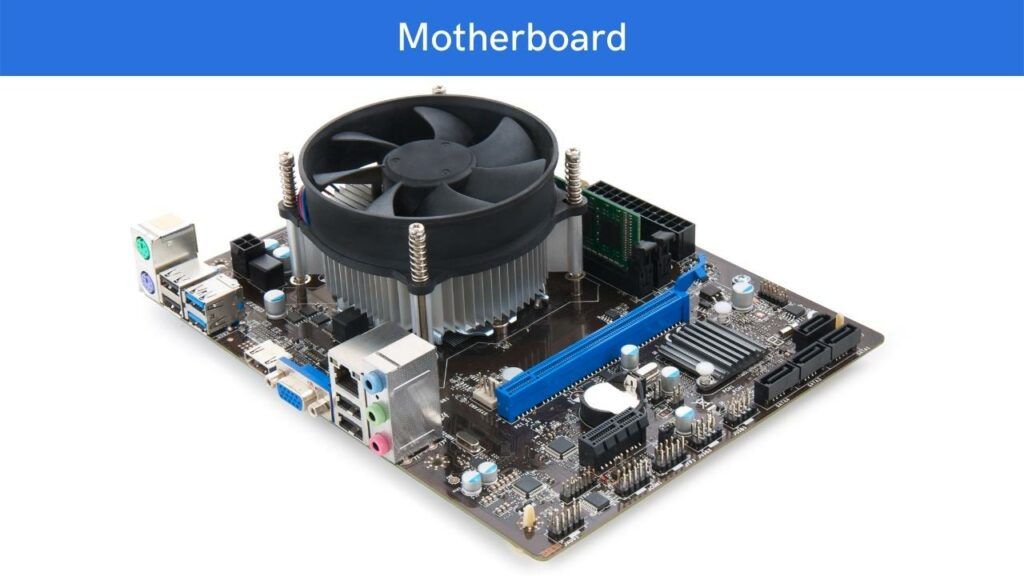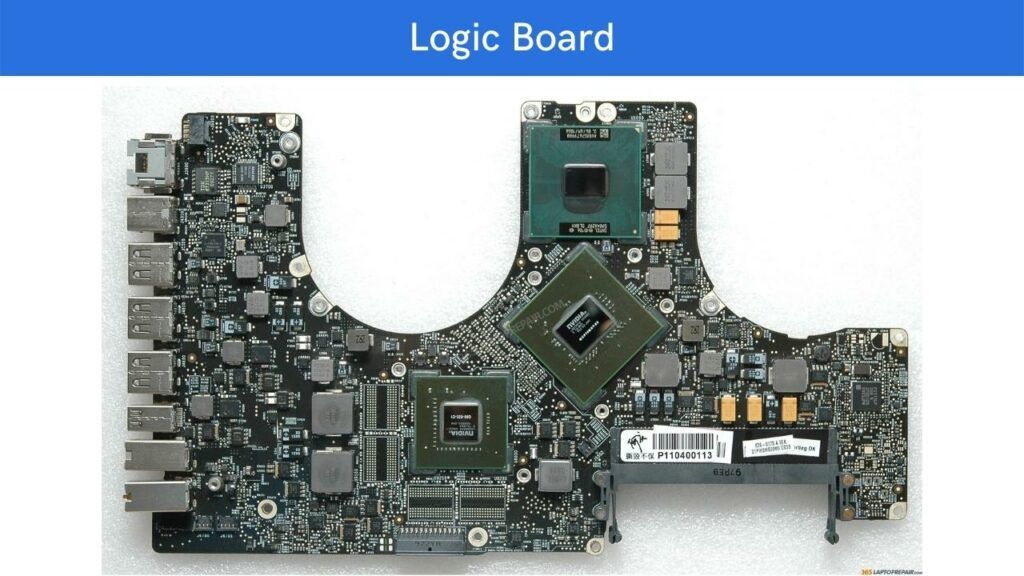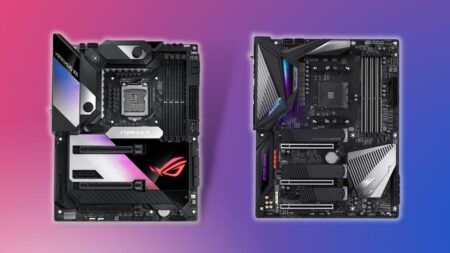Just like your brain, your computer has a central processing unit that coordinates all of the information and activities going on inside it. The CPU is mounted onto a logic board, which many people incorrectly refer to as the motherboard.
While they share some similarities, there are several key differences between these two components. In this blog post, we’ll explore what those differences are and why they matter. Stay tuned!
Logic Board Vs Motherboard [Difference]
The logic board is the heart of the computer. It’s what makes all the components work together and allows the computer to function. The motherboard is the framework upon which everything else is built upon.
Think of the logic board as the brain and the motherboard as the skeleton. The logic board contains all of the circuitry and components that make the computer work, while the motherboard provides a sturdy structure to support all of those components.
While motherboards are usually larger in size than logic boards, they don’t actually contain as many electronic components. In fact, most of the time, the only component found on a motherboard is the central processing unit (CPU).
All of the other important parts of the computer, like the memory, storage, and input/output (I/O) ports, are found on the logic board.

Even though the motherboard doesn’t have as many electronic components as the logic board, it’s still a vital part of the computer.
The motherboard provides the necessary connections to connect all of the different parts of the computer together. It also helps to protect the delicate components on the logic board from damage.
So, when you’re looking at a computer, the logic board is what contains all of the important stuff that makes it work, while the motherboard is what holds everything together. They both play an essential role in keeping your computer up and running.
Also read: Best Motherboards for i7 9700K
Is logic board same as motherboard?
A logic board is the main printed circuit board (PCB) in a computer. It holds many of the crucial components of the system, including the central processing unit (CPU), random access memory (RAM), and other important chips and circuitry.
The motherboard is a term often used interchangeably with logic board. In general, it refers to the PCB that contains the sockets into which all of the other components are plugged.
However, some people use the term to refer more specifically to the CPU and RAM chips and their support circuitry, while others use it to refer to every last component on the PCB.
So, in short, a logic board is a subset of a motherboard. All motherboards have a logic board, but not all logic boards are motherboards. It really just depends on how you’re using the terms.
Must read: Best White Motherboards
Is the main logic board the motherboard?
The motherboard is the main logic board in a computer. It contains the CPU, memory, and other essential components. The motherboard connects these components to the rest of the computer, allowing them to communicate with each other.
The term “motherboard” is derived from the fact that it is the central board in a computer. While the motherboard is not the only board in a computer, it is the most important one. Without the motherboard, a computer would not be able to function.
Is IO board same as motherboard?
The motherboard is the main printed circuit board of a computer. It is also known as the mainboard, system board, or logic board. The IO board is a controller that manages input and output for devices connected to a computer.
The term IO board can refer to either the motherboard or a separate card that plugs into the motherboard.
While both boards are responsible for handling input and output, the motherboard is responsible for other functions as well, such as controlling the CPU, memory, and expansion cards. As a result, the IO board is not the same as the motherboard.
Must read: Best Motherboards for Ryzen 5 5600x
Difference Betweeen an IO Board and a Motherboard?
There are a few key differences between an IO board and a motherboard:
The motherboard is the main printed circuit board of a computer while the IO board is a controller that manages input and output for devices connected to the computer.
The term IO board can refer to either the motherboard or a separate card that plugs into the motherboard.
The motherboard is responsible for other functions as well, such as controlling the CPU, memory, and expansion cards. As a result, the IO board is not the same as the motherboard.
An IO board is a printed circuit board that helps to manage input/output for devices that are connected to a computer. It can either be the motherboard or a separate card that plugs into the motherboard.
The main difference between an IO board and a motherboard is that a motherboard also controls the CPU, memory, and expansion cards in addition to handling input/output.
Also read: Best x470 Motherboards
How Does Motherboard Work?

A motherboard is the central printed circuit board (PCB) in many modern computers and holds many of the crucial components of the system, including the central processing unit (CPU), memory, and connectors for input and output devices. In this article, we’ll take a closer look at how motherboards work and some of their key features.
The CPU is the brain of the computer and is responsible for all of the processing power. It is usually mounted on a socket on the motherboard. The CPU communicates with other components via buses, which are high-speed data connections. The two main types of buses on a motherboard are the address bus and the data bus.
The address bus connects the CPU to memory, I/O devices, and other components that need to be addressed. The data bus connects the CPU to devices that can store or retrieve data, such as memory, storage devices, and I/O devices.
Motherboards also have slots for expansion cards, which are used to add additional features to the computer. Common expansion cards include graphics cards, sound cards, and network cards. Expansion cards are inserted into slots on the motherboard and are connected to the system via buses.
The BIOS (Basic Input Output System) is a chip on the motherboard that stores information about the hardware components in the system and how they are configured. The BIOS is responsible for booting up the computer and configuring the hardware before the operating system takes over.
A chipset is a group of chips on the motherboard that controls communications between the various components in the system. The chipset also provides support for features such as USB, SATA, and PCI Express.
The power supply unit (PSU) is responsible for supplying power to all of the components in the system. The PSU is usually connected to the motherboard via a 24-pin or 8-pin connector.
The form factor of a motherboard refers to its size and shape. ATX is the most common form factor for desktop computers, while microATX and miniITX are common form factors for smaller devices such as laptops and small form factor PCs.
Now that you know how motherboards work, you can start shopping for one that’s right for your needs. Be sure to check out our selection of motherboards here at pcfolks.com!
How Does Logic Board Work?

The logic board is the heart of the computer. It is a thin sheet of metal or plastic that contains all the circuitry needed to run the machine. Every other component in the computer is connected to the logic board in some way.
The processor, memory, and other components are all mounted on the logic board. The board also has connectors for the power supply, keyboard, mouse, and other external devices. Most logic boards also have slots for expansion cards, which can be used to add new features to the computer.
Logic boards are designed to be very rugged and can withstand a lot of abuse. However, they are still susceptible to damage from static electricity, physical trauma, and overheating. If any of these problems occur, the logic board will usually need to be replaced.
Frequently Asked Questions
How does a logic board work?
The logic board is the heart of the computer. It is a thin sheet of metal or plastic that contains all the circuitry needed to run the machine. Every other component in the computer is connected to the logic board in some way.
How can I tell if my logic board is bad?
If your computer isn’t working, it’s likely that the logic board is the problem. However, you can also look for physical signs of damage, such as burn marks or cracks in the board. You may also experience problems with input/output devices or expansion cards if the logic board is damaged.
How do I replace a damaged logic board?
If your logic board is damaged, you will need to replace it. You can do this yourself if you are familiar with computer hardware, or you can take it to a professional for repair. Replacing the logic board is usually not covered by a warranty, so it is important to check your warranty before taking any action.
What is a motherboard?
A motherboard is a printed circuit board that contains the circuitry needed to run a computer. It is the main component of the machine, and all other components are connected to it in some way. The processor, memory, storage devices, and input/output devices are all mounted on or connected to the motherboard.
How does a motherboard work?
The motherboard is responsible for communications between the various components in the system. It also provides support for features such as USB, SATA, and PCI Express. The power supply unit (PSU) is responsible for supplying power to all of the components in the system. The PSU is usually connected to the motherboard via a 24-pin or 8-pin connector.
What is the form factor of a motherboard?
The form factor of a motherboard refers to its size and shape. ATX is the most common form factor for desktop computers, while microATX and miniITX are common form factors for smaller devices such as laptops and small form factor PCs.
Conclusion
So, there you have it. The motherboard is the main circuit board in your computer and is responsible for all communication between hardware components.
The logic board is a smaller, more specific circuit board that controls specific functions within the computer.
If you’re still having trouble understanding the difference or want to know more about how either of these boards works, leave us a comment below and we’ll be happy to help. Thanks for reading!

